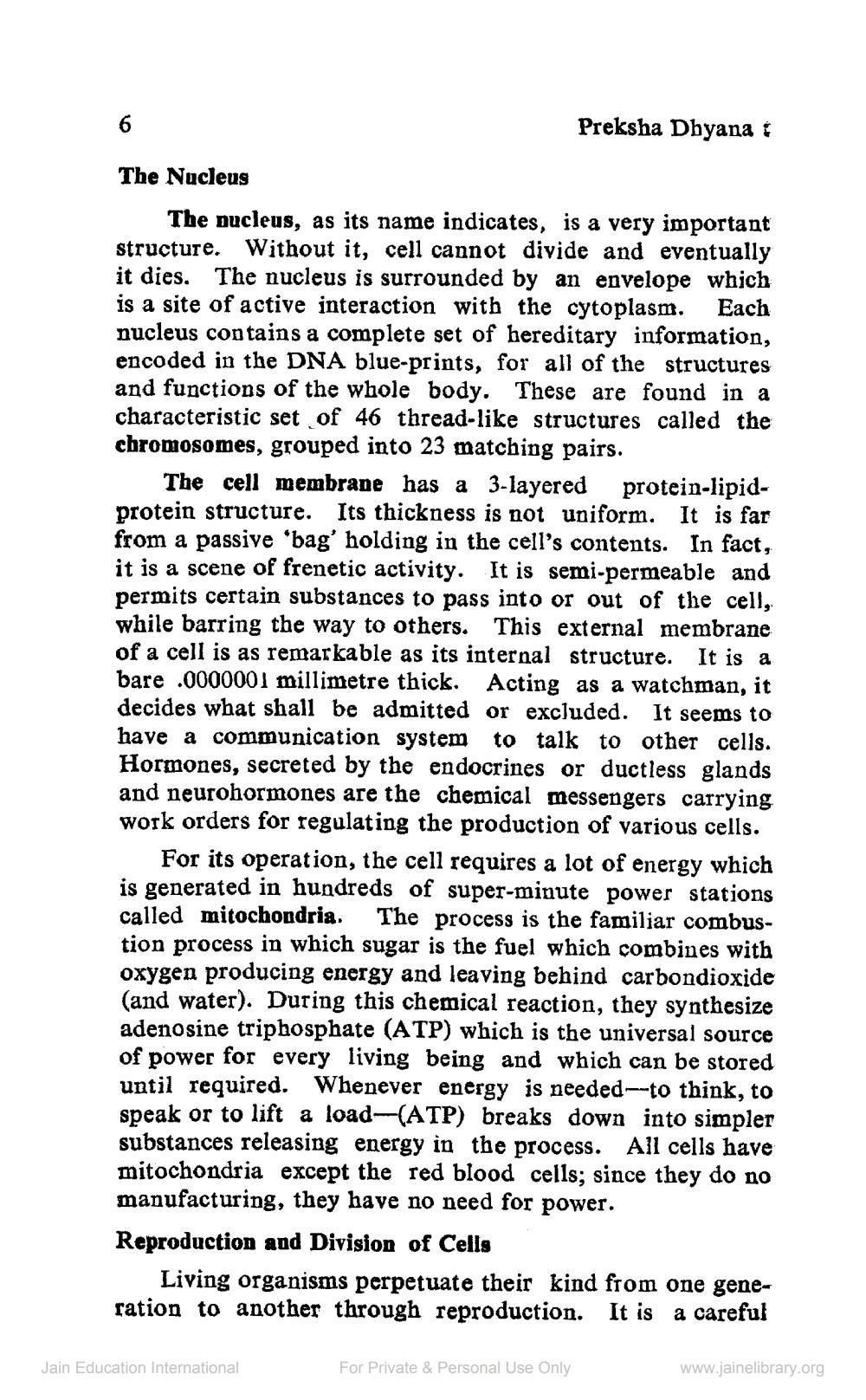________________
Preksha Dhyana 6
The Nucleus
The nucleus, as its name indicates, is a very important structure. Without it, cell cannot divide and eventually it dies. The nucleus is surrounded by an envelope which is a site of active interaction with the cytoplasm. Each nucleus contains a complete set of hereditary information, encoded in the DNA blue-prints, for all of the structures and functions of the whole body. These are found in a characteristic set of 46 thread-like structures called the chromosomes, grouped into 23 matching pairs.
The cell membrane has a 3-layered protein-lipidprotein structure. Its thickness is not uniform. It is far from a passive 'bag' holding in the cell's contents. In fact, it is a scene of frenetic activity. It is semi-permeable and permits certain substances to pass into or out of the cell, while barring the way to others. This external membrane of a cell is as remarkable as its internal structure. It is a bare .0000001 millimetre thick. Acting as a watchman, it decides what shall be admitted or excluded. It seems to have a communication system to talk to other cells. Hormones, secreted by the endocrines or ductless glands and neurohormones are the chemical messengers carrying work orders for regulating the production of various cells.
For its operation, the cell requires a lot of energy which is generated in hundreds of super-minute power stations called mitochondria. The process is the familiar combustion process in which sugar is the fuel which combines with oxygen producing energy and leaving behind carbondioxide (and water). During this chemical reaction, they synthesize adenosine triphosphate (ATP) which is the universal source of power for every living being and which can be stored until required. Whenever energy is needed--to think, to speak or to lift a load-(ATP) breaks down into simpler substances releasing energy in the process. All cells have mitochondria except the red blood cells; since they do no manufacturing, they have no need for power. Reproduction and Division of Cells
Living organisms perpetuate their kind from one generation to another through reproduction. It is a careful
Jain Education International
For Private & Personal Use Only
www.jainelibrary.org




